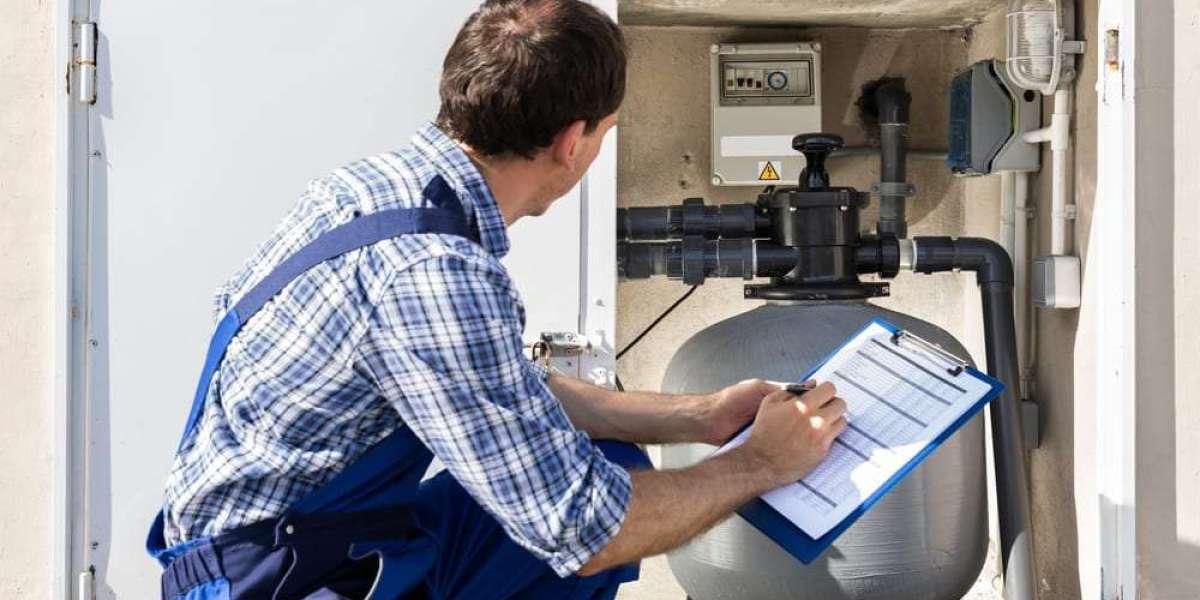Water pressure is one of those things you may not think about—until it becomes a problem. Whether it’s a dribbling shower or a slow-filling washing machine, low water pressure can significantly affect your daily comfort and your home’s plumbing efficiency.
At Drain One Plumbing, we understand how frustrating water pressure issues can be. That’s why we offer professional water pressure testing and tailored solutions to restore your system’s performance. This comprehensive guide will walk you through what water pressure is, why it might drop, how to test it, and when it’s time to bring in the pros.
What Is Water Pressure and Why Is It Important?
Water pressure refers to the force that pushes water through your home’s plumbing system. It ensures a steady flow from taps, showers, toilets, dishwashers, and washing machines. Measured in pounds per square inch (PSI), residential water pressure typically ranges between 40 and 80 PSI.
Maintaining proper water pressure is essential not only for convenience but also for the longevity and health of your plumbing system. Inadequate pressure can lead to operational problems for water-based appliances and inefficient water use, while excessive pressure might damage your pipes and fixtures.
What Is Water Pressure Testing?
Water pressure testing is the process of measuring the force of water in your plumbing system to ensure it falls within the ideal range. The most common tool used is a pressure gauge, which can be easily connected to an outdoor faucet or laundry tap.
At Drain One Plumbing, we utilize advanced tools to test your system with accuracy. These readings can reveal underlying issues such as hidden leaks, blockages, or a failing pressure regulator. Routine pressure testing can prevent costly repairs by detecting problems early.
What Causes Low Water Pressure?
Low water pressure is a common issue and can result from many causes. Below are some of the most frequent culprits:
1. Clogged Pipes
Over time, mineral deposits, debris, or rust can accumulate in pipes, especially in areas with hard water. This buildup restricts water flow and decreases pressure at your faucets and fixtures.
2. Leaking Pipes
A hidden leak somewhere in your plumbing system diverts water from its intended path. Not only does this reduce water pressure, but it can also increase your water bill and cause property damage.
3. Faulty Pressure Regulator
Most modern homes have a pressure regulator installed near the main water supply. If this device malfunctions or is improperly set, your entire home’s pressure may be affected.
4. Municipal Water Supply Problems
Your water utility provider might experience supply issues or be conducting maintenance work, especially during peak usage hours. These external factors can temporarily lower your water pressure.
5. Corroded or Old Plumbing
Older pipes, especially galvanized steel ones, tend to corrode or develop internal rusting. This narrows the pipe diameter and affects water flow, resulting in persistent low pressure.
6. High Water Demand in the Household
When multiple fixtures are used simultaneously—such as during morning routines—your home’s water pressure may dip temporarily. This is normal but can be improved with a few adjustments.
How to Check for Water Pressure
You don’t need to be a plumber to figure out whether your water pressure is too low. Here are some simple methods to test it yourself:
✔️ Use a Pressure Gauge
Buy a pressure gauge from a local hardware store. Attach it to an outdoor spigot or the laundry room faucet (make sure other water-using appliances are off). Turn the water on full force. A reading between 40 and 80 PSI is considered ideal.
✔️ Observe Water Flow
Check how strong water flows from taps, showerheads, and hose connections. If you notice reduced force, especially when multiple fixtures are running, it could be a sign of low pressure.
✔️ Compare Different Areas
If your kitchen sink has decent pressure but the bathroom shower does not, the issue may be localized—such as a clogged showerhead or pipe leading to that fixture.
DIY Techniques to Improve Water Pressure
Before calling a plumber, you can try a few simple do-it-yourself fixes to improve water pressure:
✅ Clean Showerheads and Faucet Aerators
Mineral deposits often clog small holes in showerheads and faucet aerators. Unscrew the fixture, soak it in vinegar, and scrub away buildup. This can instantly improve flow.
✅ Check for Leaks
Inspect exposed pipes for signs of leaks—like wet spots, mold, or a hissing sound. Fixing even a small leak can significantly increase water pressure.
✅ Adjust the Pressure Regulator
If your home has a pressure regulator, it might be set too low. With a wrench, carefully adjust the screw or nut to increase pressure. Be cautious not to exceed 80 PSI, which can damage your pipes.
✅ Install a Pressure Booster
A water pressure booster pump can help if your home suffers from consistently low municipal water pressure. These devices are affordable and effective, especially in multistory homes or areas with chronic low supply.
When to Call the Professionals at Drain One Plumbing
While DIY methods are great for minor issues, some situations require the tools and expertise of licensed professionals. Here’s when to call Drain One Plumbing:
- You’ve tried everything and pressure is still low
- You suspect a hidden leak or damaged pipe
- You have an aging plumbing system
- You’re unsure how to safely adjust the pressure regulator
- Your pressure fluctuates severely without explanation
Our team provides comprehensive water pressure assessments, using state-of-the-art equipment to diagnose and fix the issue efficiently.
How Drain One Plumbing Can Help
At Drain One Plumbing, we don’t just test water pressure—we offer end-to-end solutions:
- Advanced Pressure Testing: We accurately measure PSI and check your system for leaks, clogs, or faulty components.
- Regulator Adjustments: If your pressure regulator is the problem, we’ll either recalibrate or replace it.
- Pipe Repairs and Replacements: From replacing a small section to repining older homes, we handle it all.
- Water Pressure Booster Installation: We can recommend and install the right pressure booster system for your home.
We’ll also provide a full report of your system’s health, and we’ll work closely with you to determine the most cost-effective and long-lasting solution.
Conclusion
Water pressure affects everything from your morning shower to your dishwasher’s performance. Understanding what causes low pressure—and how to check and fix it—can save you time, money, and frustration.
If you’re still struggling with low water pressure, don’t let it go unchecked. Reach out to the trusted team at Drain One Plumbing. We’ll diagnose the problem, recommend the best course of action, and restore strong, reliable water flow to your home.
FAQs
1: How can I tell if my water pressure is too low?
If water from your taps is weak or appliances like washing machines take longer to fill, your pressure is likely below ideal.
2: What is considered low water pressure?
Generally, under 40 PSI is considered low. Optimal residential pressure falls between 40 and 80 PSI.
3: Can a clogged filter affect water pressure?
Yes. Clogged filters or aerators reduce water flow. Cleaning or replacing them can quickly improve pressure.
4: Why does my water pressure vary during the day?
Fluctuations can be caused by peak usage times in your neighborhood or internal plumbing issues like partially blocked pipes.
5: Can Drain One Plumbing fix low water pressure?
Absolutely! We specialize in water pressure testing, repairs, and full-system evaluations to bring your plumbing back to peak performance.







